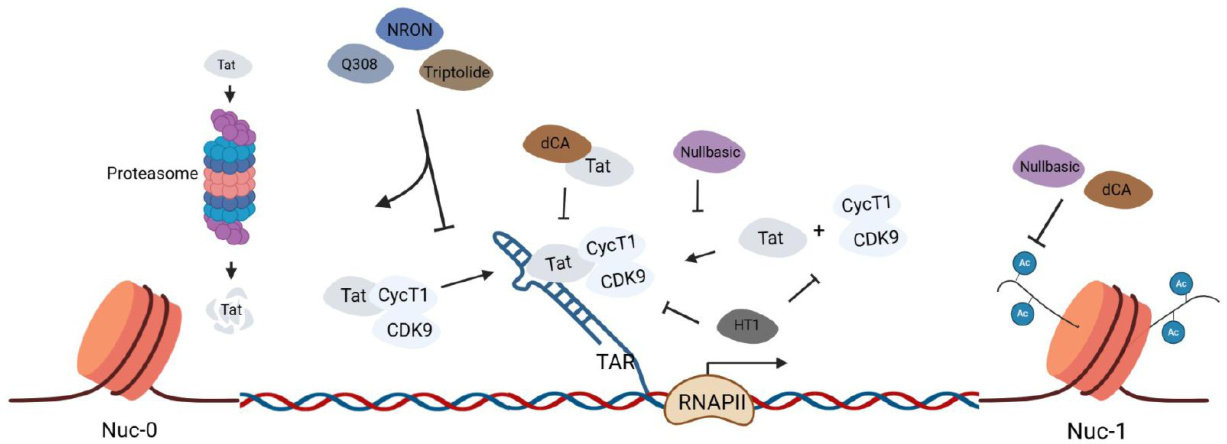以Tat为靶点的人类免疫缺陷病毒1型潜伏库治疗策略的研究进展


打开文本图片集
[中图分类号] R512.91 [文献标志码] A
ABSTRACTHuman immunodeficiency virus type 1(HIV-1) latent reservoirs pose the primary obstacle to curing acquired immunodeficiency syndrome (AIDS). Transactivator(Tat),a regulatory protein encoded by HIV-1,influences the establishment and reactivation of latent reservoirs by promoting viral transcription. Inhibitors targeting Tat protein suppress viral rebound by reducing Tat protein levels and disrupting its transcription-promoting functions. Among the two strategies for treating HIV-1 latent reservoirs,the“block-and-lock”strategy,which is based on Tat protein inhibitors,aims to target HIV-1 proteins or host factors while interfering with histone epigenetic modifications,thereby permanently silencing proviral DNA and maintaining HIV-1 latency even after treatment discontinuation. Tat-related inhibitors such as didehydrocortistatin A(dCA),triptolide,and apalutamide-derived Q3O8 regulate HIV-1 latency through distinct mechanisms. This review summarizes the regulatory roles of Tat in HIV-l latency, Tat protein inhibitor-based therapeutic strategies for targeting latent reservoirs,and the mechanisms of action of related inhibitors,with the goal of providing insights for the development of drugs toward achieving functional HIV-1 cure.
KEYWORDSAcquired immunodeficiency syndrome; Transactivator;HIV-1 latent reservoir;“Blockand-lock” strategy;Functional cure
人类免疫缺陷病毒(human immunodeficiencyvirus,HIV)起源于非洲黑猩猩非人灵长类动物猿类免疫缺陷病毒,于1983年被首次发现并成功分离[]。(剩余17553字)